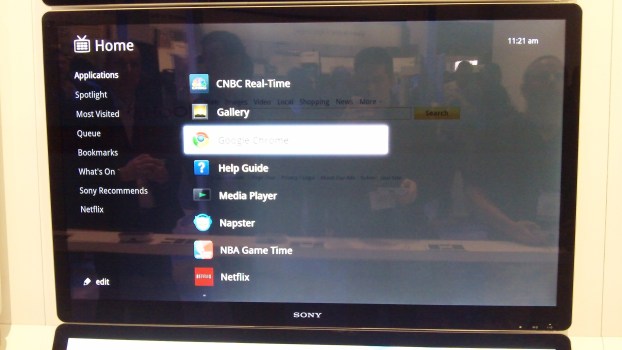 Sony has been one of the biggest names in TVs for as long as we can remember. The company is predicting that it will sell around 22 million TVs this year alone, but somehow, it will still lose money on TVs. Amazingly, Sony has been losing money on the production and sales of TVs for the last eight years. On Tuesday, Sony made the bold statement that it is tired of losing cash selling TVs, and would like to change that trend. While it is not shocking to hear that Sony wants to change that trend, it is shocking to hear that it has been losing money for that long.
Sony has been one of the biggest names in TVs for as long as we can remember. The company is predicting that it will sell around 22 million TVs this year alone, but somehow, it will still lose money on TVs. Amazingly, Sony has been losing money on the production and sales of TVs for the last eight years. On Tuesday, Sony made the bold statement that it is tired of losing cash selling TVs, and would like to change that trend. While it is not shocking to hear that Sony wants to change that trend, it is shocking to hear that it has been losing money for that long.
Sony doesn’t want to focus on selling more TVs, it thinks the problem lies in the profit margins on the TVs it currently sells. It originally hoped to sell 27 million TVs this year, but recently reduced that estimate to 22 million. It’s hard to understand just how slim the profit margin is on the TVs Sony is selling if it can sell so many and still lose money. Sony is open for suggestions, as it outlined several possible ways it hopes to cut costs in the coming years.
One possible issue reason Sony is losing money is its partnership with Google TV. We enjoyed Sony’s NSX-46GT1 with integrated Google TV, but we did think that Google TV was both a strong point and weak point of the set. With recent reports that more Google TV units are being returned than are being sold, it can’t be profitable to be in the Google TV market. Unless Google can make Google TV a true value-adding service, anyone who tries to sell a Google TV product will have a hard time.
Another problem Sony might be facing is the lack of interest in 3D TVs. Sony offers quite a few 3D TVs, and as of right now it really is a not a booming market to be in. It seems that Sony might be trying to be the market leader in markets that aren’t making any money. Maybe if it tries to stick with making competitive TVs and leave the niche markets alone, it might find itself in a better situation.
Editors' Recommendations
- Best Sony TV deals: Save on best-in-class 4K TVs and 8K TVs
- The 6 best OLED TVs for 2024
- You Asked: 3D VR, QDEL technology, and TV size vs. quality
- 3D is readying for another comeback — and this time it’s personal
- The best 8K TVs for 2024: from Samsung, LG, and Sony


